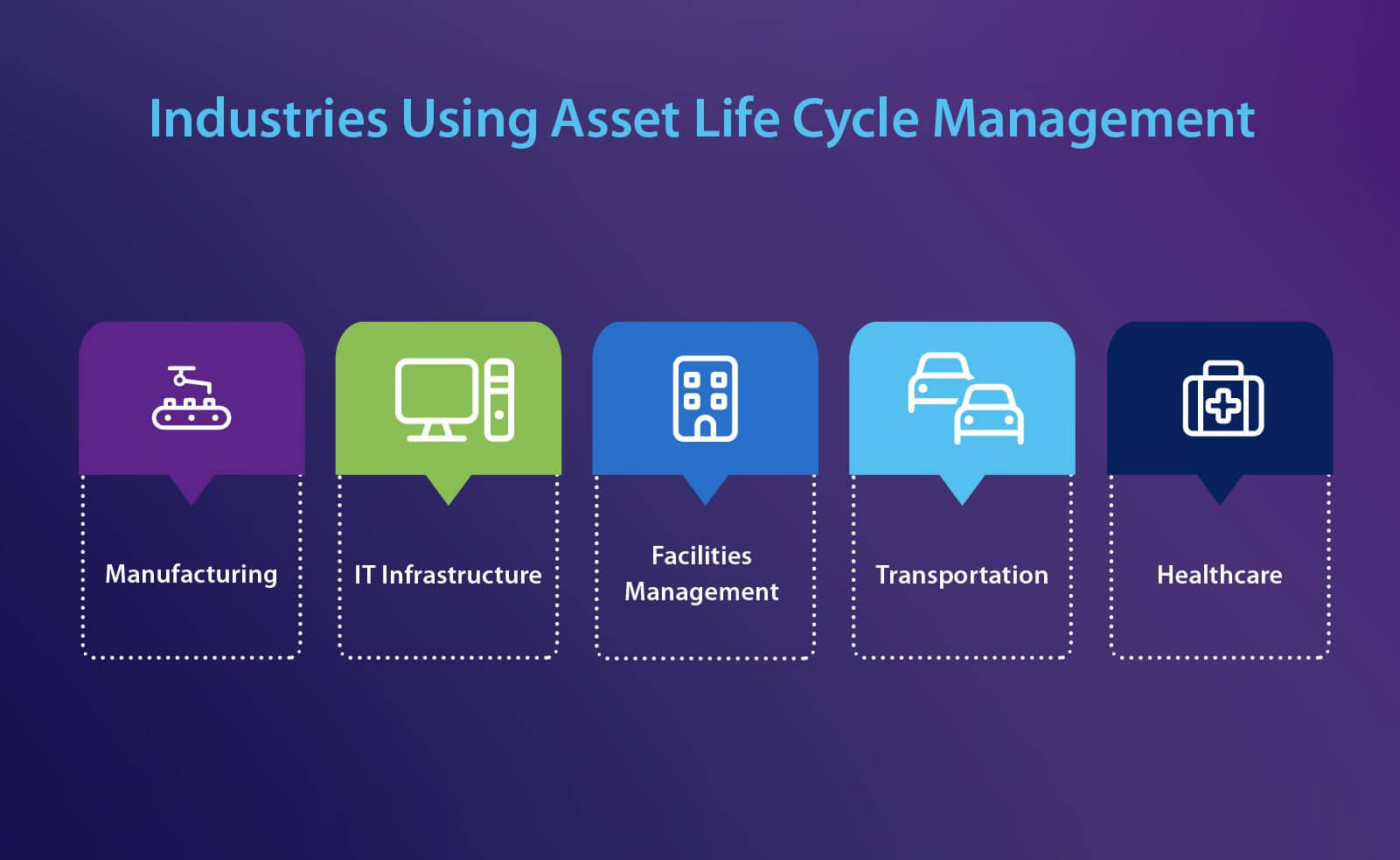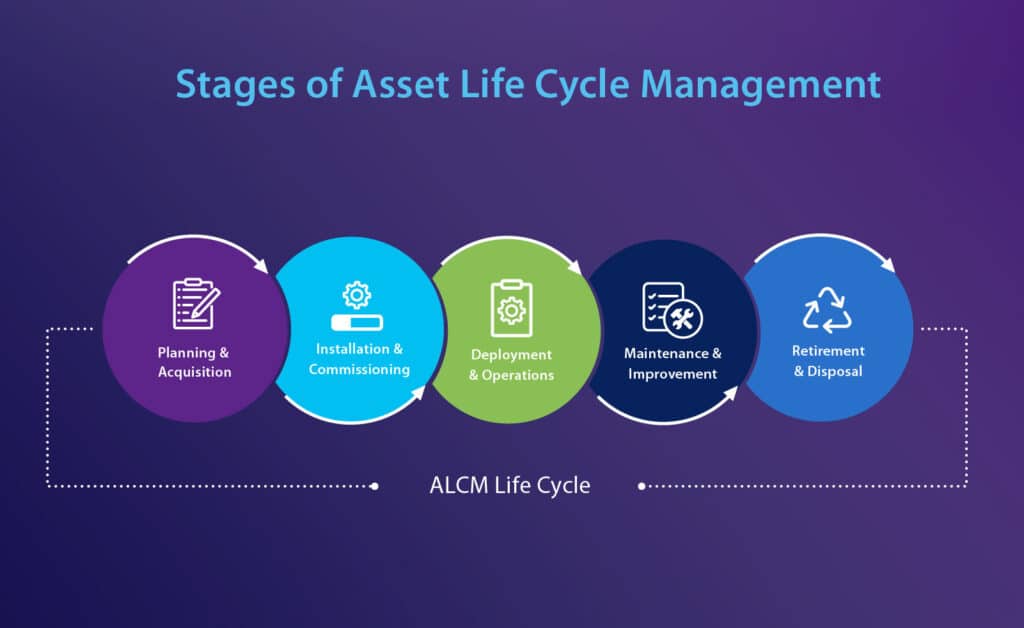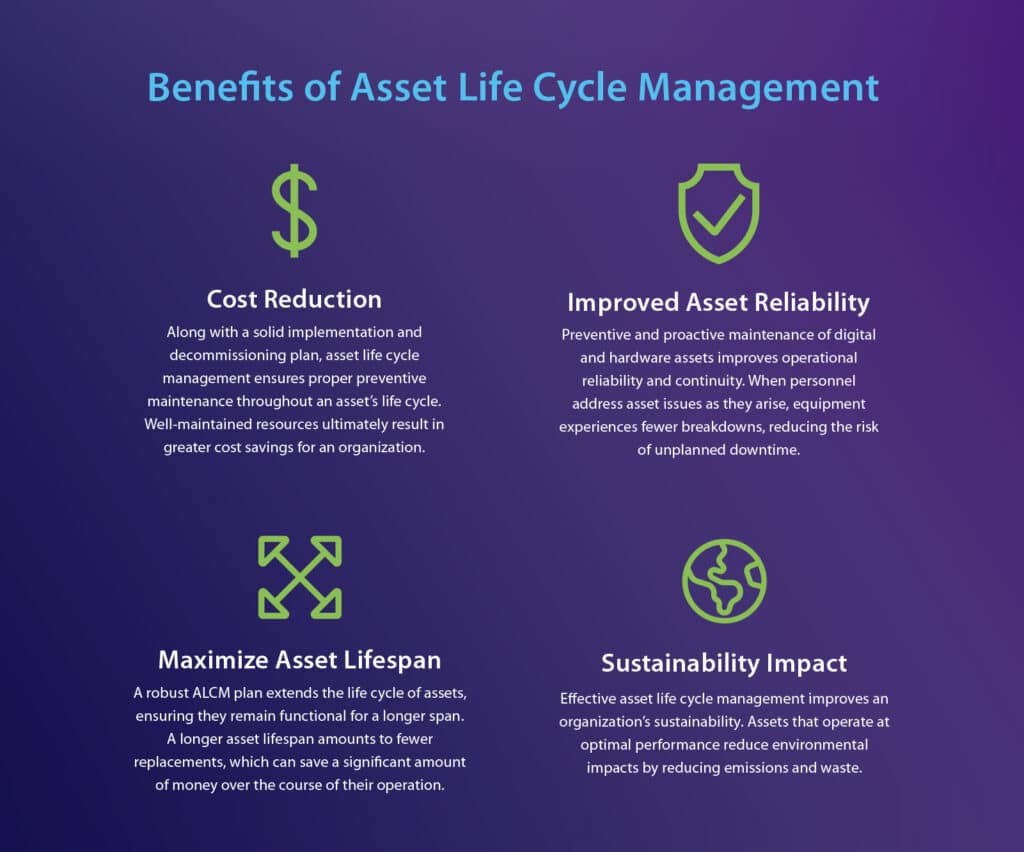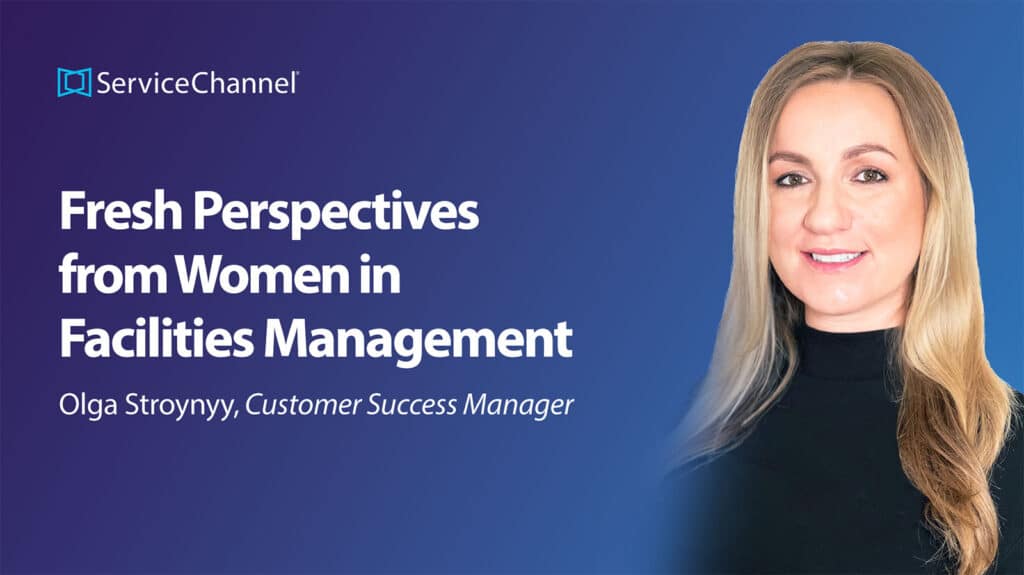What Is Asset Life Cycle Management?

Explore What Asset Life Cycle Management is Key Stages, Steps in How to Implement It, Its Benefits, and Future Trends to Ensure Business Success.
Asset life cycle management (ALCM) is the process of determining the usability period for physical assets, such as a piece of industrial equipment or an application server. By implementing an ALCM plan, organizations are able to control their costs better and optimize productivity.
Stages of Asset Life Cycle Management (ALCM)
ALCM takes a systematic approach to managing assets throughout their entire lifecycle. An asset management plan looks at an item’s viability from acquisition to its inevitable decommissioning and disposal. The asset lifecycle management process seeks to account for reactive and preventive maintenance tasks along the way.
Planning and Acquisition
The planning and acquisition stage of asset life cycle management aims to define the objectives of identifying necessary assets, procuring them, and managing their use throughout their lifecycle. Once a plan is in place, an organization is better positioned to acquire the needed asset.
Installation and Commissioning
Installation involves placing and securing assets in their designated locations. Necessary utilities are connected, and any counterparts are bridged to the asset, such as installing a conveyor belt between a product’s output point and the packaging station. Commissioning involves running viability tests to ensure the asset operates safely and correctly and inspecting all components to ensure a stable implementation.
Deployment and Operations
Once all necessary testing is complete, personnel are trained to operate the asset. The piece of equipment is then ready to be put to use for its intended purpose. Lead operators and maintenance staff often continue to monitor and adjust an asset in its first few runs to ensure it’s dialed in for their specific needs.
Maintenance and Improvement
A diligent asset maintenance schedule helps to safeguard assets from breaking down and ensures a longer life cycle. Along the way, many assets may have updates and upgrades available. These improvements usually help increase the equipment’s overall efficiency and extend its life expectancy.
Retirement and Disposal
Every asset inevitably outlives its usefulness. When it’s no longer cost-effective to continue using a piece of equipment, companies usually retire the asset. This can be a lengthy process that involves procuring a new replacement asset, dismantling the current asset, and safely removing the existing item for safe and legal disposal.

How to Implement Asset Life Cycle Management
Implementing an asset life cycle management plan is a methodical process for managing assets along every stage of their practical usefulness. Each life cycle phase requires its own strategy for implementing, maintaining, and decommissioning equipment.
I. Identify all assets
Categorize all assets based on factors such as location, function, relevance, and monetary value. Companies can better prioritize management efforts and minimize unexpected costs by classifying assets.
II. Make data-driven decisions
Collect and maintain current data for each asset. Analyzing asset data enables organizations to make informed decisions regarding maintenance, repairs, upgrades, and retiring equipment.
III. Take a life-cycle view
Adopt a holistic view of each asset. Consider all elements from acquisition to disposal, such as value depreciation, preventive maintenance plans, and repair contingencies.
IV. Plan for maintenance and replacement
Implement standard operating procedures (SOPs) for maintaining critical assets. Standardizing proactive and reactive upkeep strategies equips personnel to competently address issues and extend asset lifespans.
V. Use appropriate software
Employ an asset management software or a computerized maintenance management system (CMMS). Automated processes and real-time asset tracking improve maintenance response time and efficiency by alerting personnel of problems and pinpointing major issues to critical assets at a glance.
Industries Using Asset Life Cycle Management
A wide range of industries utilize ALCM to ensure effective asset management of physical and digital resources throughout their lifespan. They use a variety of asset management plans. Still, enterprise asset management (EAM) for asset lifecycle management is one of the most popular tools for efficiently administering asset handling over time.
Manufacturing
Companies that rely on production equipment and machinery benefit tremendously from implementing ALCM processes. Such a plan ensures proper preventive maintenance occurs on time, extending the usability of critical resources.
Transportation
The transportation industry depends on a functioning fleet of vehicles, aircraft, and ships. Organizations also typically rely on various tools and equipment that require proper maintenance and monitoring. ALCM provides for efficient asset performance throughout each resource’s life cycle.
Healthcare
Asset lifecycle management is essential in the healthcare industry. Lives often depend on reliable medical equipment, well-kept facilities, and functioning digital health assets. The impact of a dependable ALCM plan extends well beyond the walls of a healthcare facility.
IT Infrastructure
Information Technology (IT) spans a variety of related enterprises. Digital assets often touch many other industries. Effective and efficient ALCM is crucial in ensuring a hiccup or breakdown within an asset’s life cycle doesn’t have a ripple effect across partner businesses.
Facilities Management
Facilities refers to physical structures that house an organization or organizational assets. ALCM ensures proper maintenance and effective performance of buildings, related utilities, and the building’s infrastructure. This ensures a stable operational environment and frequently provides significant cost savings for companies across asset life cycle stages.

Benefits of Asset Life Cycle Management
By implementing and refining asset management processes throughout resource lifecycles, businesses can enjoy a wide range of advantages. Reliable asset maintenance of equipment, facilities, and digital assets contributes to an organization’s overall success and sustainability.
Cost Reduction
Along with a solid implementation and decommissioning plan, asset lifecycle management ensures proper preventive maintenance throughout an asset’s life cycle. Well-maintained resources ultimately result in greater cost savings for an organization.
Improved Asset Reliability
Preventive and proactive maintenance of digital and hardware assets improves operational reliability and continuity. When personnel address asset issues as they arise, equipment experiences fewer breakdowns, reducing the risk of unplanned downtime.
Sustainability Impact
Effective asset lifecycle management improves an organization’s sustainability. Assets that operate at optimal performance reduce environmental impacts by reducing emissions and waste.
Maximize Asset Lifespan
A robust ALCM plan extends the life cycle of assets, ensuring they remain functional for a longer span. A longer asset lifespan amounts to fewer replacements, which can save a significant amount of money over the course of their operation.
The Future of Asset Life Cycle Management
Asset lifecycle management (ALCM) has come a long way over the years. Continuous improvements in standardized processes and software systems ensure fewer asset management challenges in the future. Technical advancements like these continue to progress life cycle strategies forward:
- Internet of Things (IoT) connects devices across a network.
- Artificial intelligence (AI), machine learning, and predictive analytics secure informed real-time decision-making.
- Digital twins provide virtual representations of physical asset status.
- Blockchain technology ensures a contiguous record of asset events.
- Augmented reality(AR) and virtual reality (VR) are invaluable training tools.
Asset Life Cycle Management for Business Success with ServiceChannel
Asset life cycle management (ALCM) leads to more efficient production and a more effective operation overall. A robust ALCM strategy offers organizations a clear roadmap for each phase of a resource’s lifespan, informing everyone involved of the following steps and current needs.
A strong enterprise asset management (EAM) software solution can help guide your company’s asset management plan toward more efficient operations. Contribute to a more sustainable and efficient future for your organization with the help of ServiceChannel.
Contact us for a free demo today.




